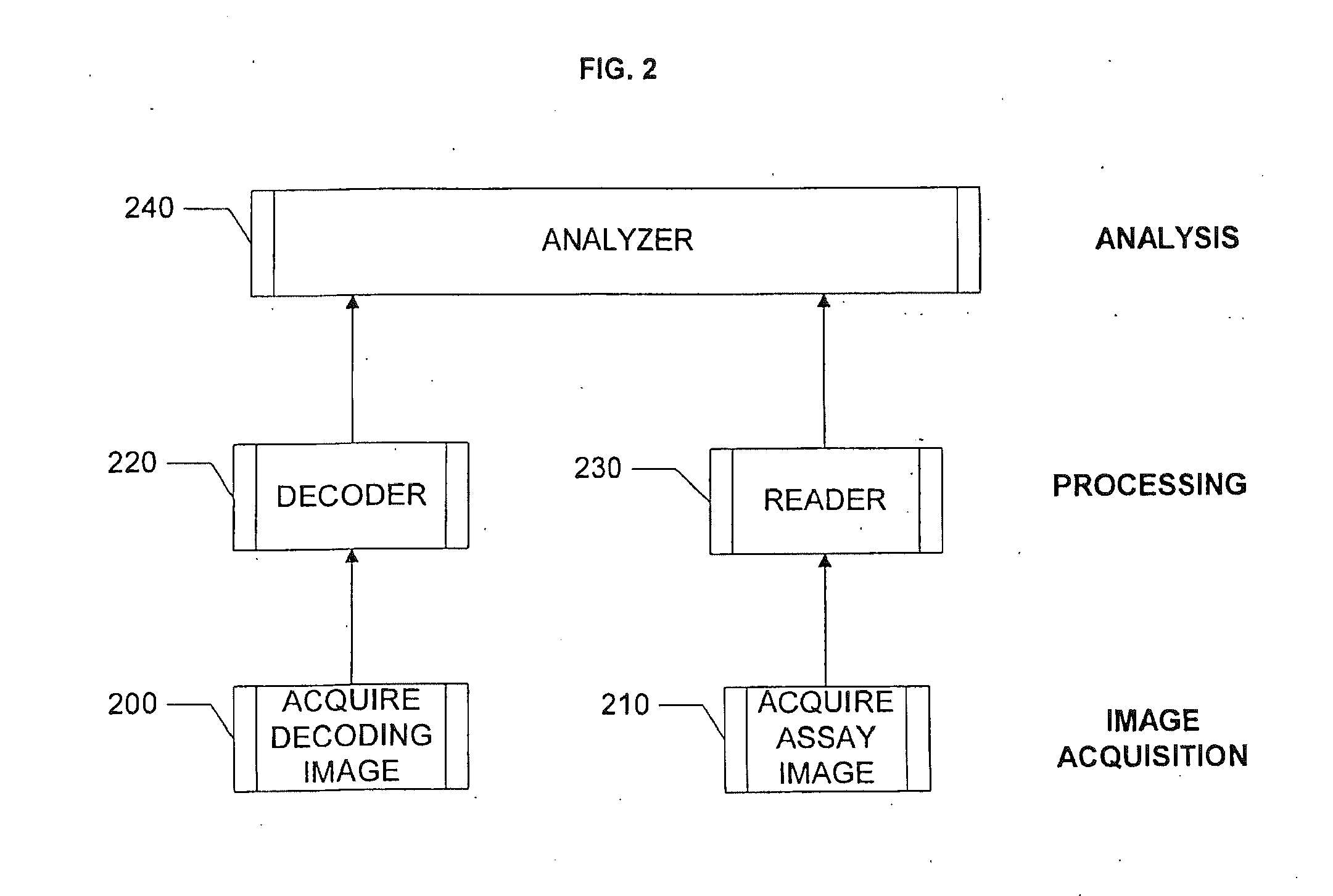Analysis, secure access to, and transmission of array images
a technology of array images and secure access, applied in the field of analysis, can solve the problems of non-standard assays, inability to provide standard assays, and inability to perform analysis, and achieve the effects of reducing the chance of assigning one patient's results to another, increasing the confidence of analysis, and reducing the probability of patient error
- Summary
- Abstract
- Description
- Claims
- Application Information
AI Technical Summary
Benefits of technology
Problems solved by technology
Method used
Image
Examples
example 1
Acquiring and Processing Decoding Image(s)
[0159]FIG. 11 illustrates the processing steps performed by the DECODER. Displayed in a Graphical User Interface (GUI) (1100) are three images, namely: a Brightfield image (1110), a green fluorescence image (1120) and a blue fluorescence image (1130). Grids, extracted and aligned by the DECODER, also are displayed. Also displayed is a scatter plot (1140) produced by the DECODER from the intensities in green and blue fluorescence images.
example 2
Constructing Decoding Map
[0160]FIG. 12 illustrates the construction of the 2D decoding map by the ANALYZER which may be integrated with the DECODER whose GUI is shown (1200). The map of the present example is composed of 33 clusters (1210), each of which is assigned a unique tag index. This is displayed for each cluster along with the number of beads contained in that cluster. For example, cluster 1 contains 101 beads.
example 3
Acquiring and Processing Assay Image(s)
[0161]FIG. 13 illustrates the processing steps performed by the READER. Displayed in a GUI (1300) are three images, namely: a Brightfield image (1310), a fluorescence image (1320). Grids, extracted and aligned by the READER, also are displayed.
PUM
| Property | Measurement | Unit |
|---|---|---|
| center-to-center distance | aaaaa | aaaaa |
| thickness | aaaaa | aaaaa |
| ionic strength | aaaaa | aaaaa |
Abstract
Description
Claims
Application Information
 Login to View More
Login to View More - R&D
- Intellectual Property
- Life Sciences
- Materials
- Tech Scout
- Unparalleled Data Quality
- Higher Quality Content
- 60% Fewer Hallucinations
Browse by: Latest US Patents, China's latest patents, Technical Efficacy Thesaurus, Application Domain, Technology Topic, Popular Technical Reports.
© 2025 PatSnap. All rights reserved.Legal|Privacy policy|Modern Slavery Act Transparency Statement|Sitemap|About US| Contact US: help@patsnap.com



